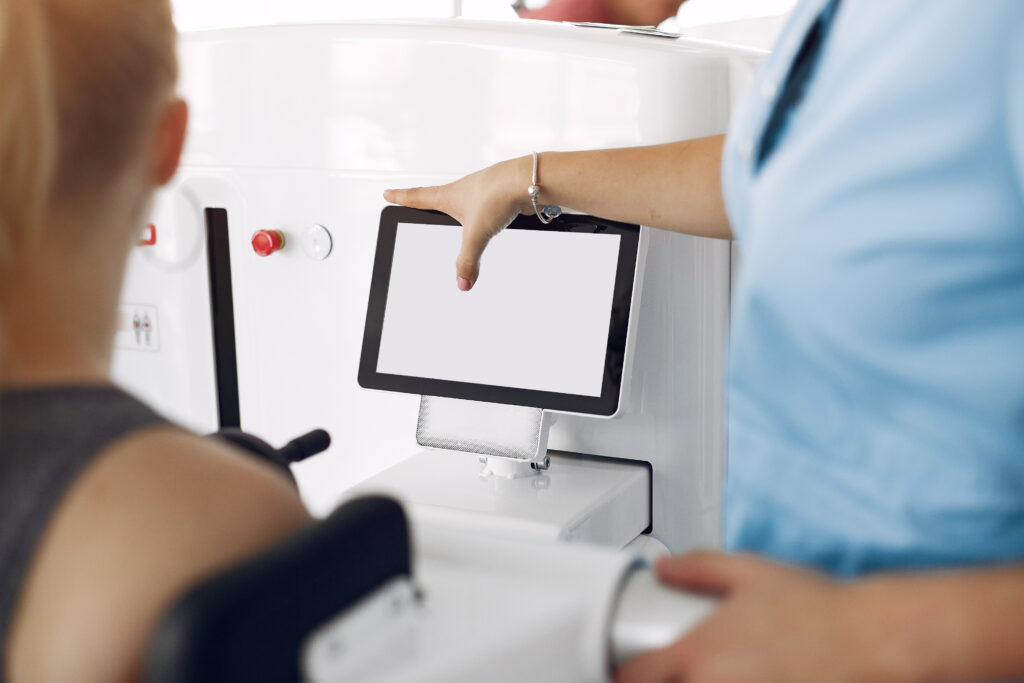In today’s healthcare industry, marketing has become an essential part of every hospital’s strategy. As the competition in the healthcare industry is growing, hospitals need to focus on creating effective hospital marketing campaigns that resonate with their target audience.
In this blog post, we will highlight the 5 best hospital marketing campaigns that have inspired healthcare brands and created a significant impact in the industry.
We will also highlight the 4th campaign that is truly life-changing and has set a new benchmark in healthcare marketing.

Cleveland Clinic – “Empathy: The Human Connection to Patient Care”: Hospital Marketing Campaign
Cleveland Clinic is a nonprofit academic medical center that has gained recognition for its empathetic patient care approach. The hospital launched its “Empathy: The Human Connection to Patient Care” Hospital Marketing campaign, which focused on showcasing the hospital’s empathetic approach to patient care. The campaign included a series of videos that highlighted real-life patient experiences and stories, which emphasized the importance of empathy in healthcare. This campaign was highly successful, and the videos received over 4.5 million views on YouTube.

Mayo Clinic – “Mayo Clinic Health System”: Hospital Marketing Campaign
Mayo Clinic is a world-renowned healthcare provider that has a vast network of hospitals and clinics. The “Mayo Clinic Health System” campaign focused on highlighting the hospital’s community-focused approach to healthcare. The campaign showcased the hospital’s commitment to providing healthcare services to rural communities and underprivileged populations. Mayo Clinic used social media, billboards, and print ads to spread the message, which resulted in a significant increase in brand awareness and patient referrals.

Mount Sinai – “Mount Sinai Heart”: Hospital Marketing Campaign
Mount Sinai is a New York-based hospital that launched its “Mount Sinai Heart” campaign, which focused on showcasing the hospital’s expertise in heart care. The campaign included a series of videos that featured real-life patients who had undergone heart surgery at Mount Sinai. The videos highlighted the hospital’s cutting-edge technology, highly skilled physicians, and personalized patient care approach. This campaign helped Mount Sinai become a leader in heart care and attract patients from all over the world.
Children’s Hospital of Philadelphia – “Children’s Brain Tumor Tissue Consortium”:
The Children’s Hospital of Philadelphia launched its “Children’s Brain Tumor Tissue Consortium” campaign, which aimed to raise awareness about the hospital’s research efforts to find a cure for childhood brain tumors. The hospital used social media, billboards, and print ads to spread the message, and the campaign received significant media coverage. The hospital’s efforts resulted in increased funding for research and raised awareness about childhood brain tumors.
St. Jude Children’s Research Hospital – “Thanks and Giving Campaign”:
St. Jude Children’s Research Hospital is a nonprofit hospital that is dedicated to finding a cure for childhood cancer. The hospital launched its “Thanks and Giving Campaign,” which focused on raising funds for childhood cancer research. The campaign included a series of videos that featured real-life patients, their families, and celebrities who supported the hospital’s cause. The campaign was highly successful and helped raise millions of dollars for childhood cancer research. This campaign is truly life-changing as it has the potential to save millions of children’s lives.
Unique Value Proposition for Hospital Marketing Campaigns
A Unique Value Proposition (UVP) is a statement or set of statements that define the unique benefits and advantages that a product or service offers to its customers. It is essentially a promise to the customer about the value they can expect to receive from choosing that product or service over its competitors. A UVP is a critical element in any successful marketing strategy because it communicates to customers why they should choose a particular product or service and what sets it apart from the competition.
A UVP should be clear, concise, and easily understandable. It should focus on the most important benefits of the product or service and avoid making vague or generic claims. A good UVP should also be customer-focused and emphasize how the product or service solves the customer’s problems or fulfills their needs.
A unique value proposition can be a combination of several elements, including product features, benefits, price, quality, convenience, and customer service. For example, a hospital’s UVP might include:
- High-quality medical care delivered by highly trained and experienced physicians and staff.
- Personalised patient care that puts the needs and preferences of the patient first.
- Advanced medical technologies and innovative treatment options that are not available at other hospitals.
- Affordable pricing options or payment plans that make medical care accessible to a broader range of patients.
- Convenient location and flexible scheduling options that allow patients to receive care when and where they need it.
- Outstanding customer service that goes above and beyond to make the patient experience positive and stress-free.
A hospital’s UVP should be developed by understanding the needs and preferences of their target audience. This requires conducting market research to identify the unique challenges and pain points that their patients face and determining how their hospital can best address these challenges.
In summary, a Unique Value Proposition is a critical element in a successful hospital marketing campaign. It should clearly communicate the unique benefits and advantages that a hospital offers its patients and set it apart from the competition. The UVP should be developed based on a thorough understanding of the target audience’s needs and preferences and be customer-focused, concise, and easily understandable.
Clear and specific target audience for Hospital Marketing Campaigns
Identifying a clear and specific target audience is a crucial step in any successful hospital marketing campaign. The target audience refers to the group of people or organizations that the hospital aims to reach with its marketing efforts.
It is essential to understand the demographics, psychographics, and other relevant characteristics of the target audience to develop a tailored marketing strategy that resonates with them.
Here are some examples of a clear and specific target audience for a hospital:
- Women between the ages of 25-50 who are expecting a child: This target audience requires specialized medical care and support during pregnancy, childbirth, and postpartum care. The hospital’s marketing campaign could focus on highlighting its experienced obstetricians, state-of-the-art facilities, and personalized care for new mothers and their babies.
- Senior citizens living with chronic medical conditions: This target audience requires ongoing medical care, specialized treatments, and support to manage their conditions. The hospital’s marketing campaign could focus on highlighting its geriatric services, compassionate care, and expertise in treating chronic illnesses.
- Athletes and physically active individuals: This target audience requires specialized medical care and support to treat injuries and optimize their performance. The hospital’s marketing campaign could focus on highlighting its sports medicine services, experienced physicians, and innovative treatment options for athletes of all levels.
- Employers and business owners: This target audience requires medical services for their employees and their families. The hospital’s marketing campaign could focus on highlighting its corporate health programs, wellness services, and cost-effective healthcare solutions for businesses of all sizes.
- Patients seeking cancer treatment: This target audience requires specialized medical care and support to manage their cancer diagnosis and treatment. The hospital’s marketing campaign could focus on highlighting its expertise in oncology, state-of-the-art cancer treatment facilities, and compassionate care for patients and their families.
Identifying a clear and specific target audience allows the hospital to tailor its marketing messages to the specific needs, interests, and preferences of that audience. It enables the hospital to create a more effective marketing campaign that resonates with its target audience and drives more meaningful results.
Consistent branding and messaging use of various marketing channels (digital, print, events, etc.) for Hospital Marketing Campaigns
Creating a consistent branding and messaging strategy and utilizing various marketing channels is essential for any hospital marketing campaign. Consistent branding and messaging help to build trust and credibility with the target audience and establish a recognizable identity for the hospital. Utilizing various marketing channels helps to reach a broader audience and engage with them through multiple touchpoints.
Here are some tips on creating a consistent branding and messaging strategy and utilizing various marketing channels for a hospital marketing campaign:
- Develop a Brand Identity: Develop a consistent visual identity for the hospital that includes a logo, color palette, and typography. This will help to create a recognizable and cohesive visual style across all marketing channels.
- Create a Brand Voice: Develop a brand voice that is consistent across all marketing channels. This includes messaging and tone that is tailored to the target audience and represents the values of the hospital.
- Utilize Various Marketing Channels: Utilize various marketing channels to reach a broader audience. This includes digital channels such as social media, email marketing, and paid advertising, as well as traditional channels such as print advertising, events, and community outreach.
- Personalize the Message: Personalize the message for each marketing channel to engage with the target audience on a more individual level. For example, social media messaging could be more casual and interactive, while print advertising could be more informative and traditional.
- Create a Content Strategy: Develop a content strategy that includes valuable information, educational resources, and engaging content that is relevant to the target audience. This can be shared through blog posts, social media updates, email newsletters, and other marketing channels.
- Measure and Analyze Results: Measure and analyze the results of each marketing channel to determine what is working and what needs to be improved. This includes monitoring engagement metrics such as click-through rates, open rates, and social media engagement, as well as tracking leads and conversions.
By creating a consistent branding and messaging strategy and utilizing various marketing channels, a hospital can build trust and credibility with its target audience and engage with them through multiple touchpoints. This can help to increase awareness, drive more leads and conversions, and ultimately, improve the hospital’s bottom line.
Integration of Patient Feedback:
Integrating patient feedback into the hospital’s marketing strategy can help to improve patient satisfaction and outcomes. This includes collecting and analyzing patient feedback through surveys, online reviews, and other channels to identify areas for improvement and tailor the hospital’s marketing messages to better reflect the patient experience. By taking patient feedback into account, hospitals can build trust and credibility with their patients and create a more patient-centered marketing campaign.
Budget Allocation for Ongoing Marketing Efforts:
Allocating a budget for ongoing marketing efforts is critical to sustaining a successful marketing campaign. This includes budgeting for various marketing channels, such as social media, paid advertising, and community outreach, as well as investing in ongoing content creation and analysis to ensure that the marketing strategy remains effective and relevant.
Adaptability to Market Changes and Trends:
Adapting to changes in the market and staying on top of industry trends is critical to maintaining a successful hospital marketing campaign. This includes staying up to date on new technologies, evolving patient preferences, and industry trends to ensure that the hospital’s marketing messages remain relevant and effective.
Ethical and Compliant with Healthcare Regulations:
Hospital marketing campaigns must adhere to ethical and regulatory standards to maintain patient trust and avoid potential legal repercussions. This includes adhering to industry standards such as HIPAA and ensuring that marketing messages are honest, accurate, and not misleading.
Overall, the integration of patient feedback, budget allocation for ongoing marketing efforts, adaptability to market changes and trends, and ethical compliance with healthcare regulations are all critical elements for a successful hospital marketing campaign.
By taking these factors into account, hospitals can create an effective and sustainable marketing strategy that engages with their target audience, builds trust and credibility, and ultimately drives more meaningful results.
Conclusion
In conclusion, hospital marketing campaigns are essential for hospitals to reach out to their target audience, build trust and credibility, and ultimately drive more leads and conversions. The best hospital marketing campaigns utilize a unique value proposition, have a clear and specific target audience, and maintain consistent branding and messaging across various marketing channels.
Integrating patient feedback, allocating a budget for ongoing marketing efforts, adapting to market changes and trends, and ensuring ethical compliance with healthcare regulations are all critical elements for a successful hospital marketing campaign.
By implementing these strategies and focusing on the needs and preferences of their target audience, hospitals can create an effective and sustainable marketing campaign that generates meaningful results and drives growth for the organization.
We want to acknowledge your hard work and dedication.
Utilize this free marketing platform and start promoting your healthcare business immediately.




